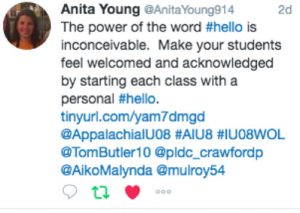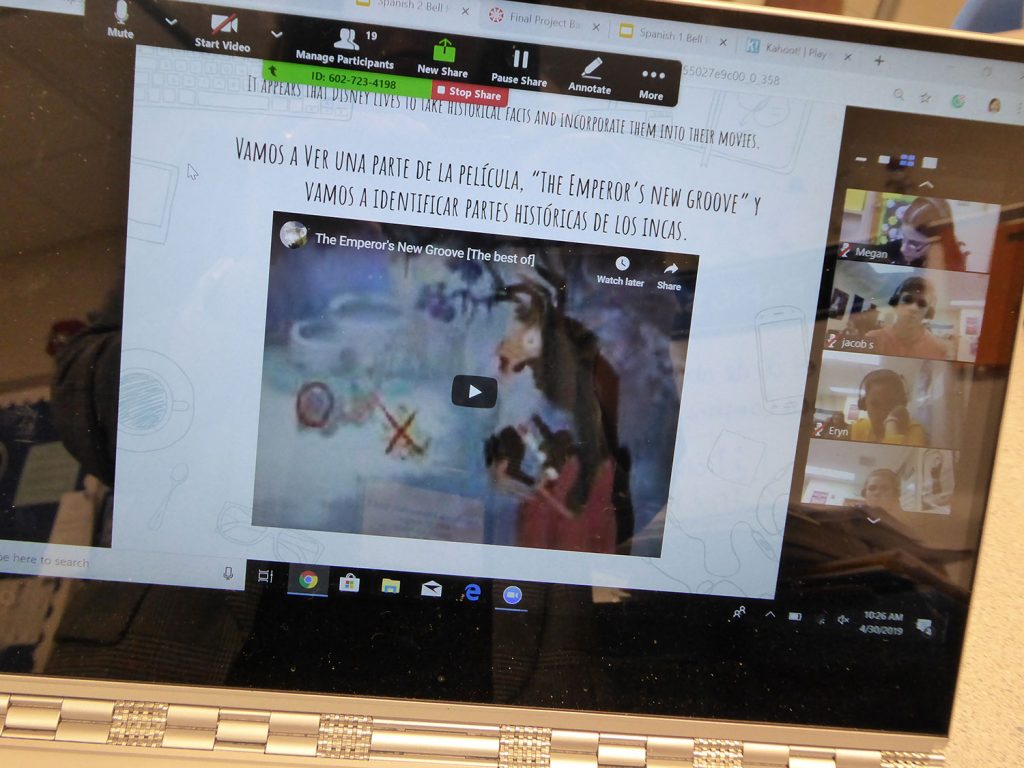Building Relationships in the Virtual Classroom
I remember it like it was yesterday. The guidance secretary asked me if I had a minute to talk when I made my usual stop on the way to lunch. She pulled me aside to let me that one of my students stopped by most days after PE class and was sad. You see, I let kids pick their own partners! What I thought was a great way to give the kids choice and explore sometimes challenging new skills with someone they were comfortable with, turned out to leave this young learner alone. She didn’t have friends in this class and often found herself waiting at the fringe to get a partner, that probably felt rejected, too.
- Why did she go to the guidance secretary and not me?
- Maybe she was right – I didn’t even notice?
- Why would she trust me?
- How can she really learn from me if she doesn’t feel safe and valued?
This lesson, one of isolating a student who wanted to be engaged, has stayed with me now for a long time! I am thankful that I was able to change that student’s experience and for our guidance secretary for letting me know.
Today, I use this experience to consider how we approach learners and learning every day. It matters that we make everyone feel welcome, that our teachers have the tools and resources to communicate, and that the schools we work with trust us to let us know when we are missing the mark.
Becoming Learner-Centered and Welcoming
In order for any of us to learn, it is important that we feel safe and welcomed. Building trust with your learners does not happen just because you enter a classroom. Welcome begins as we develop the relationships that allow a learner to respect us; the effort in building relevant lessons and experiences, the communication, and the belief that each person can learn, is the beginning.
So how do we start at the World of Learning?
Professional Learning
First, we do our best model by creating an environment that welcomes our teachers and makes them feel supported. As with students, we get to know them and how they learn best. We try to be responsive to their needs and support them when they are trying something new. Then we can offer challenges to teachers who have mastered skills, and support others who may need help.
By working with our teachers and getting to know them, we show that their hard work is valued and that we see their passion for teaching. In turn, our teachers learn to do the same with their learners.

The Language of Choice and Support – Edutopia
Words matter! In Anita’s social media post she talks about something as simple as hello! A personal hello. Not a hollow, Hi, how are you!? Or generic feedback. Neither helps us connect with people. As a teacher we want to build that relationship. If I just say ‘nice job’ without reference to the many hours of work a teacher puts into providing specific feedback, she may not think I have seen her grade book. But when asking how someone did at their game or concert, or by saying what difference I see when a teacher takes the extra time to tell a student to dot their ‘i’ and cross their ‘t’ – helps to make it known that I saw and noticed the hard work and passion it took to make the extra effort to connect to the learner. Specific feedback matters. Working alongside teachers who need help matters. And, letting teachers who want to try on their own – use their wings is the beginning.
Teachers Connecting – Getting to Know Learners
At the beginning of each year our teachers use surveys and games to get to know students or create assignments that ask learners to describe what they care about and are interested in. These interactions help to focus our class presentations so they are relevant and engaging. You can see one good practice, saying hello, leads down the path of building relationships that make a student feel like they are known, that they can trust us. Isn’t that where the learning starts?
Happy learners thanking their teacher for an awesome experience in the World of Learning!
What is Relational Trust – Bryk and Schneider
Connections Matter
Connections! Relationships! Being able to count on each other. Starting with ‘hello’. Greeting students when they come into your class, answering emails when they are still relevant, connecting with the support staff, giving feedback when a grade is attached to an assignment. Helping parents understand how to help their child succeed. Without getting overly ‘scholarly’ I am talking about ‘dependent relationships’. The ones we have with each other in schools and communities. They are embedded in the brief exchanges. The tone of an email. Picking up the phone and calling when a text would seem impersonal. Little things. Making time to meet a student outside of the regular class time, looking at an assignment a second time. Understanding that life gets in the way. Setting high standards. Reaching out when you haven’t heard from a student in a while or they haven’t participated in class.
We are dependent on each other in the World of Learning. To get it right we talk to each other, to the leaders in the districts we work with, we fix things in our courses that may not make sense for a school population, we fix grammatical mistakes that we miss. We say we are sorry when we make a mistake and try not to make the same one again. We hear what our teachers, learners and colleagues have to say. We do these little things because they create a big thing called trust. Trust makes us feel safe, when we feel safe we stretch our wings and try hard things. Sometimes we fail, but when we create this atmosphere we learn from those mistakes challenge ourselves and each other to be better.
And, as Bryk and Schneider say, “Regardless of how much formal power any given role has in a school community, all participants remain dependent on others to achieve desired outcomes and feel empowered by their efforts.” Relationships are integral to learning. It is true! I am proud to say our teachers do this well.

